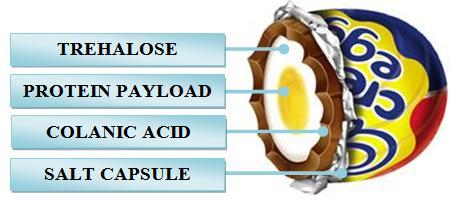Team:Imperial College London/M2
From 2009.igem.org
JamesField (Talk | contribs) (→ivy) |
JamesField (Talk | contribs) (→ivy (Inhibitor of Vertebrate lYsozyme)) |
||
| Line 19: | Line 19: | ||
=====<b><i>ivy</i> (Inhibitor of Vertebrate lYsozyme) </b>===== | =====<b><i>ivy</i> (Inhibitor of Vertebrate lYsozyme) </b>===== | ||
| - | *Discovered in 2001 as the first bacterial lysozyme inhibitor. | + | *Discovered in 2001 as the first bacterial lysozyme inhibitor. This Type-C lysozyme inhibitor resides in the periplasm. |
| + | |||
| + | |||
| + | |||
| + | =====<b><i>MilC</i> (Membrane-bound lysozyme inhibitor of Type C lysozyme) </b>===== | ||
| + | |||
| + | *This is a lipoprotein that resides in the membrane. | ||
| + | |||
| + | |||
| + | http://jb.asm.org/cgi/reprint/191/6/1979 | ||
| + | |||
| + | 19136591 | ||
====RcsB downregulates the following genes:==== | ====RcsB downregulates the following genes:==== | ||
Revision as of 16:59, 28 August 2009

Contents |
Overview
Module 2 Part i: Encapsulation
The encapsulation phase has been designed to preserve and protect the fragile protein ‘payload’ against the harsh conditions of the outside world.
Insert image of cross-section showing outer salt layer, colanic acid, and trehalose.
RcsB
RcsB upregulates the following genes:
ivy (Inhibitor of Vertebrate lYsozyme)
- Discovered in 2001 as the first bacterial lysozyme inhibitor. This Type-C lysozyme inhibitor resides in the periplasm.
MilC (Membrane-bound lysozyme inhibitor of Type C lysozyme)
- This is a lipoprotein that resides in the membrane.
http://jb.asm.org/cgi/reprint/191/6/1979
19136591
RcsB downregulates the following genes:
Module 2 Part ii: Trehalose Production
In order to preserve the integrity of our protein of interest during storage of the E.ncapsulator, we decided to incorporate a device for trehalose production within our system.
Trehalose is a disaccharide formed from two glucose molecules. Throughout nature, trehalose is associated with resistance to dessication and cold shock, and is naturally produced in Escherichia Coli. We hope that by upregulating the trehalose production pathways in E.coli we can increase trehalose concentrations within our cell, thereby conferring some resistance to protein degredation in our system. This would allow easy transport and storage of the final product.

 "
"




